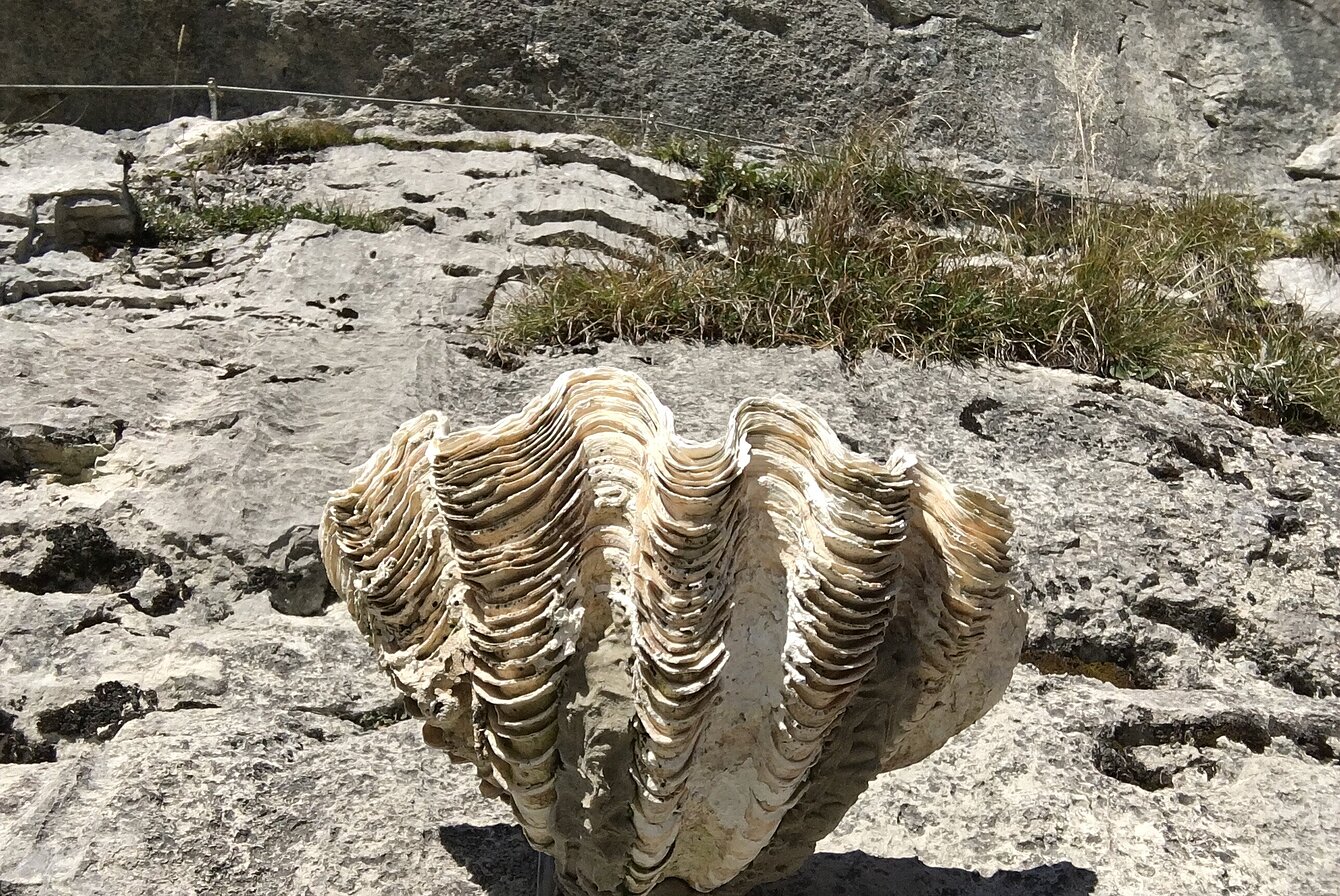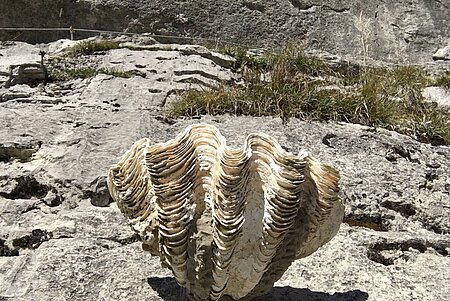In the valley:
Under the bridge spanning the Bahnhofstraße. An inhospitable, ordinary place with a lay-by and information board, situated at the entrance to the town. Almost completely lacking in history, it is now enjoying some attention thanks to a work of art: a two-piece mussel shell from the other side of the world. The piece forges a symbolic link between the lowest and the highest points of the Political Landscape project. It also connects the two locations furthest apart, linking an unspoiled setting in the Totes Gebirge with the only urban site involved in the project.
In 1938, as in many other places, the National Socialists received a warm welcome from most inhabitants of Bad Aussee. And here, too, people like Albrecht Gaiswinkler and Valentin Tarra secretly joined forces to build a regional opposition movement. Against this background the title of Bojan Šarčević’s work, The Partisan, makes reference to an issue that, if mentioned at all by the people in the region, remains controversial to this day. For decades, memory of the resistance movement has divided the local community in the Ausseerland. Supporters of the movement have rarely touched upon the topic while those who did not approve pretend it never existed. Meanwhile, attitudes have started to change slowly.
The shell was originally confiscated by the Austrian customs authorities. Its dignified natural beauty placed in an alien setting offers a rather laconic interpretation. In the Ausseerland, there did exist politically-minded people with a keen sense of right and wrong, prepared to support those in need. Their commitment and mindfulness was as silent as the grim landscape of their upbringing, which had left its mark on them. These attitudes are still there. As are the others. Like two halves of a shell.
In the mountains (no longer existent):
The steep mountain path with short climbing sections was expanded and improved a few years ago. Starting from the Loser Alm on trail 201, the route merges with trail 212 on the Hochklapfsattel saddle (1694m). Before reaching the Augstwies mountain pasture, the path branches again into trail 201 in the direction of the Albert-Appel-Haus and trail 212 in the direction of Wildenseealm. This is where Ernst Kaltenbrunner took refuge on 7 May, 1945, temporarily escaping arrest. Kaltenbrunner, born in Upper Austria, had been head of the Nazi Sicherheitspolizei and the Sicherheitsdienst as well as chief of the Reichssicherheitshauptamt since 1943. He had had contact with Hitler up until his death, yet still appears to have hoped for a reprieve and collaboration with the Allies. With the aid of some members of the resistance movement, Kaltenbrunner was placed under arrest on 12 May, 1945 at a hunting lodge that still exists today. The group began their chase on the Loser Alm and may well have taken a route similar to mountain path 201.
This work was conceived as a temporary project. The melting of snow in the mountains has already displaced one half of the shell untraceable, while the other half remains in the valley protected under the constructed bridge.






















